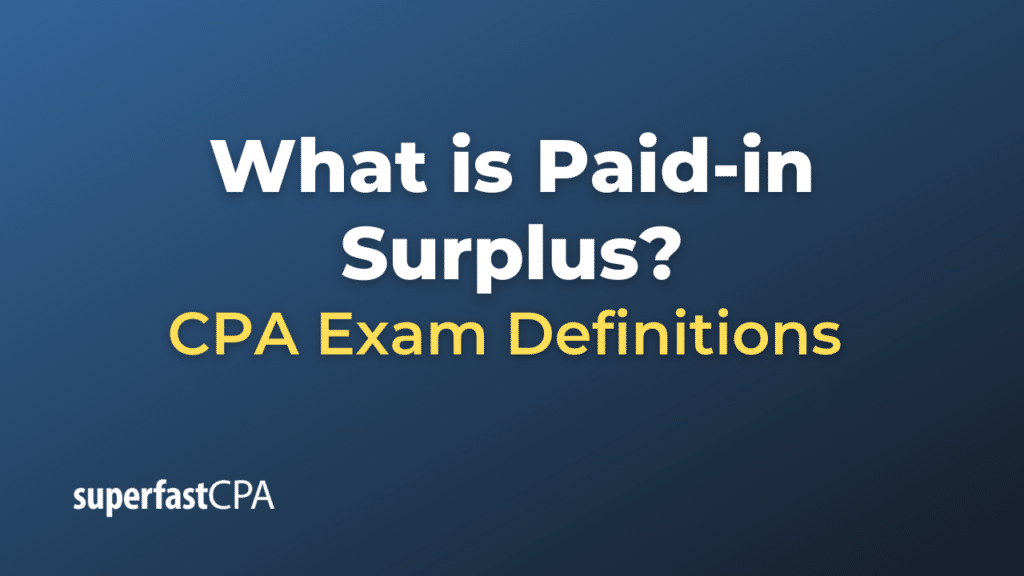Paid-in Surplus
“Paid-in surplus” is another term for “additional paid-in capital” (APIC), which is a subsection of the shareholders’ equity section on a company’s balance sheet. This represents the amount of money that a company has received from investors over and above the par value of shares during stock issuances.
When a company issues shares, it often sells them for more than their par value, which is a nominal amount used for legal purposes. The par value is typically very low, such as $0.01 per share, and does not reflect the actual price that investors are willing to pay for the shares. The actual price that investors pay is determined by factors such as the company’s performance, growth prospects, the state of the economy, and so on.
The amount that investors pay over the par value is recorded as additional paid-in capital or paid-in surplus. For example, if a company issues shares with a par value of $0.01, and investors buy these shares for $10 each, the company will record $9.99 per share as additional paid-in capital.
The additional paid-in capital represents the additional funds that the company has raised from investors, beyond the nominal par value of the shares. These funds can be used for any purpose, such as financing operations, making investments, or paying down debt.
Example of Paid-in Surplus
Imagine a company, ABC Corporation, decides to raise capital by issuing 1,000 shares. The shares have a par value of $1 per share, but due to the company’s promising business prospects, investors purchase each share for $20.
Here’s how the paid-in capital would appear:
- Par Value: Since the par value of each share is $1, and ABC Corporation issued 1,000 shares, the total par value is $1 * 1,000 = $1,000.
- Additional Paid-In Capital (Paid-in Surplus): Although the par value of each share is $1, the shares were actually sold for $20 each. Therefore, the total amount received from the share sale is $20 * 1,000 = $20,000. However, $1,000 of this amount accounts for the par value, so the additional paid-in capital (paid-in surplus) would be $20,000 – $1,000 = $19,000.
So, in this example, ABC Corporation’s total paid-in capital is $1,000 (Par Value) + $19,000 (Additional Paid-In Capital) = $20,000.
This $20,000 in total paid-in capital would be recorded on the company’s balance sheet under shareholders’ equity. The $19,000 paid-in surplus represents the extra capital that ABC Corporation has received from shareholders above the nominal par value of the shares, which can be used to fund operations, growth, or to pay down any existing debts.













